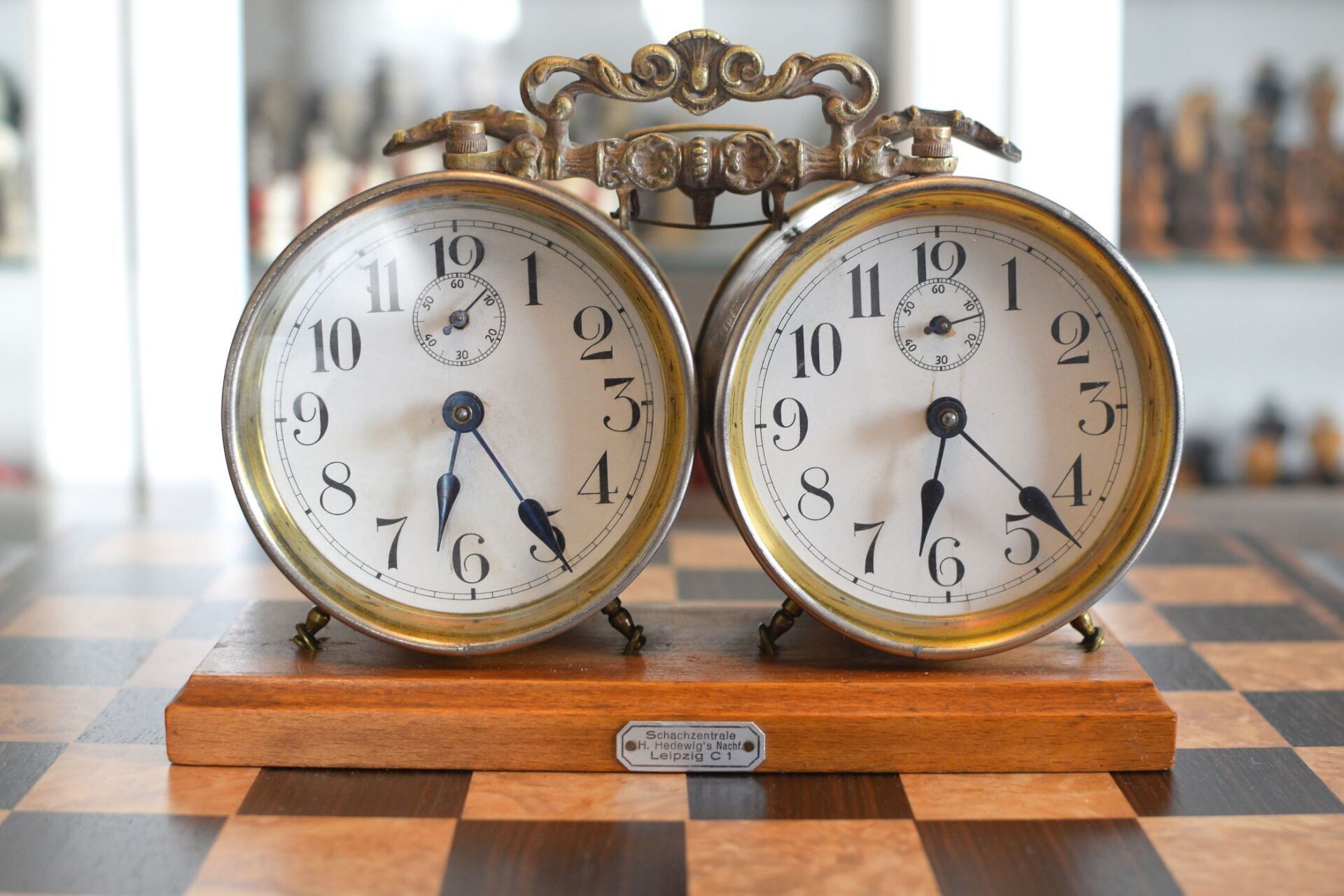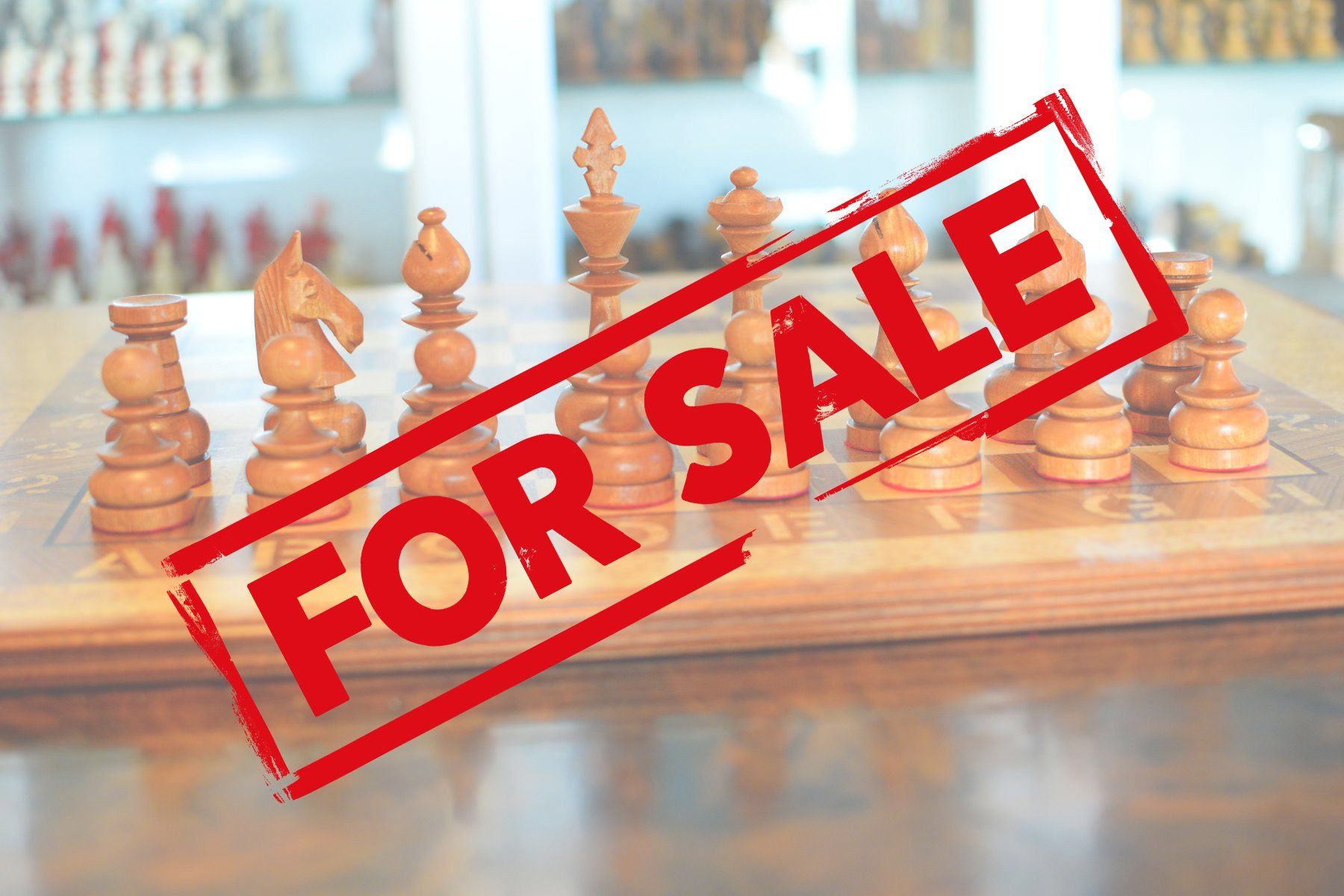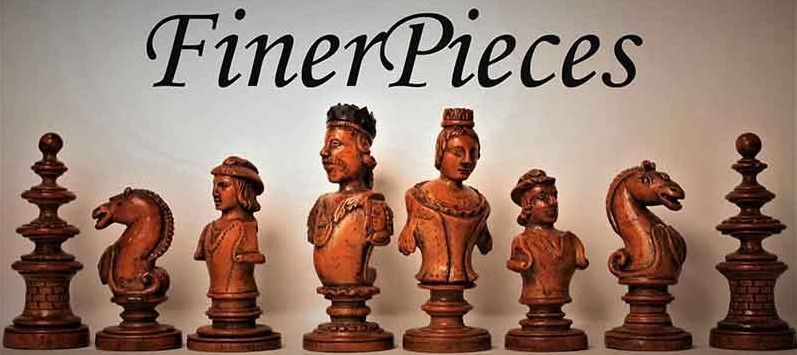Chinese Export Ivory Figural Chess Set, "King George III" Pattern, ca. 1830-1870
There are several variations of Chinese export ivory figural chess sets. This one is of the "King George III" type, the opposition of a Chinese general and the English King . One side natural, the other one stained in red. In many sets of this type, the fragile parts, like the delicate lances, staffs and weapons of the pawns are missing, whereas in this set they are complete with the exception of a white Pawn's scimitar and supposedly the royal orb on the white King's staff.
The white King embodies the image of the English Ruler King George III, wearing breeches and an undergarment and a royal gown over his shoulders adorned by a chain and long dropping tassels. On his head he wears a crown. In his right hand he carries a staff or more likely a sceptre, of which I believe the royal orb on top is missing.
The white Queen is his spouse Charlotte, also with a royal gown and crown. In her left hand she is carrying a shawl, whereas her right hand grasps her chain, a gesture which can be repeatedly found in sets of this type.
The red King embodies the image of a Chinese general in military gear carrying a large sword in his right hand. That he is of military rank is identifiable by the symbol of a fierce lion on his breastplate. In ancient China, military ranks were symbolized by four-legged animals, such as the popular lions or tigers, whereas civil ranks were symbolized by birds. The red Queen is depicted as a female, carrying a fan in her right and a bunch of flowers in her left hand.
For all royal pieces of this set, the ornamental treatment of their clothes and headgear is of exquisite subtlety.
The rooks depicted as war elephants with richly ornamented covers guided by a mahut and bearing a tower with a standard. Knights as armed riders bearing spears or lances. The Bishops are shown as clerics with tiara-like headgear on the white side and as counselors on the red side, both with richly ornamented gowns. The Pawns are foot soldiers armed with shield and scimitar on the white side and with dao (Chinese halberds) on the red side.
All pieces are placed on rosette stems and circular ornamented bases, some of which were mixed up and combined with the wrong pieces (unfortunately in some cases without the possibility to unscrew them, as they are stuck or fixed).
Figural ivory sets of this type were made in the 19th century in Cantonese workshops. It is not entirely clear, why the image of King George III was chosen. His reign lasted from 1760 to 1820 and covered significant international events, such as the American independence, the formation of the United Kingdom, the French Revolution and the Napoleonic wars. Due to an increasing mental illness, King George III was during the last decade of his reign represented by his eldest son, the Prince of Wales, later reigning as George IV. He died in Windsor in 1820 and it is believed that the sets of this type were produced from approximately the late 1820's onwards on demand of English traders in Canton.
For additional in-depth information on the history and characteristics of antique Chinese figural sets, I recommend
"Chinese Chess Sets, 18th - 20th century" by Barbara Holländer, from which I have taken significant parts of the above description.















